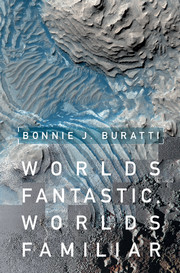Book contents
- Frontmatter
- Dedication
- Contents
- Acknowledgments
- Introduction
- 1 Mercury: The Hottest Little Place
- 2 Venus: An Even Hotter Place
- 3 Mars: The Abode of Life?
- 4 Asteroids and Comets: Sweat the Small Stuff
- 5 Galileo's Treasures: Worlds of Fire and Ice
- 6 Enceladus: An Active Iceball in Space
- 7 Titan: An Earth in Deep Freeze?
- 8 Iapetus and its Friends: The Weirdest “Planets” in the Solar System
- 9 Pluto: The First View of the “Third Zone”
- 10 Earths Above: The Search for Exoplanets and Life in the Universe
- Epilogue
- Glossary
- Index
- Plate section
5 - Galileo's Treasures: Worlds of Fire and Ice
Published online by Cambridge University Press: 24 March 2017
- Frontmatter
- Dedication
- Contents
- Acknowledgments
- Introduction
- 1 Mercury: The Hottest Little Place
- 2 Venus: An Even Hotter Place
- 3 Mars: The Abode of Life?
- 4 Asteroids and Comets: Sweat the Small Stuff
- 5 Galileo's Treasures: Worlds of Fire and Ice
- 6 Enceladus: An Active Iceball in Space
- 7 Titan: An Earth in Deep Freeze?
- 8 Iapetus and its Friends: The Weirdest “Planets” in the Solar System
- 9 Pluto: The First View of the “Third Zone”
- 10 Earths Above: The Search for Exoplanets and Life in the Universe
- Epilogue
- Glossary
- Index
- Plate section
Summary
The four main moons surrounding Jupiter have played an outsized role in the history of astronomy, just as Mercury has. They comprise a sort of mini solar system, orbiting in regular orbits about the massive Jupiter. If they were separated from the bright glare of Jupiter, they could all be seen with the naked eye, and there are occasional stories of sharp-eyed individuals being able to see the moons. They range in size from a little smaller than the Moon to larger than Mercury. The four moons seem to have no kinship with each other, spanning the range of celestial personalities from the turbulent Io to the calm Callisto. As is the case with our own Moon, they are tidally evolved and keep the same face toward Jupiter, in a state astronomers call synchronous rotation. In honor of their discoverer, Galileo Galilei, they are called the Galilean moons.
Just as I shall always remember my first view of Mercury, I shall never forget the first time I saw some of Galileo's moons. I was in the fifth grade, and my parents had just bought me a simple little telescope from Hess's, the local department store. It was a reflecting telescope with a 4-inch mirror, magnifying celestial objects only a little bit better than a pair of binoculars. The tube was made of flimsy black cardboard. I eagerly put the telescope together and placed it out on the front lawn. After I secured its wobbly tripod, I pointed it to Jupiter, which was rapidly declining in the west. The Moon wasn't up – otherwise I would have looked at it first – so the sky was dark and Jupiter loomed brightly, seemingly propped up by the trees lining the horizon. Jupiter is the third most luminous object in the night sky, after the Moon and Venus. After some frustrating fiddling, the bright planet lurched into the field of view of my little instrument. I wasn't able to see the Great Red Spot, Jupiter's eternal hurricane, but right next to Jupiter were two tiny dots, pulsating in Earth's turbulent atmosphere and in the scattered light from Jupiter.
- Type
- Chapter
- Information
- Worlds Fantastic, Worlds FamiliarA Guided Tour of the Solar System, pp. 96 - 117Publisher: Cambridge University PressPrint publication year: 2017



